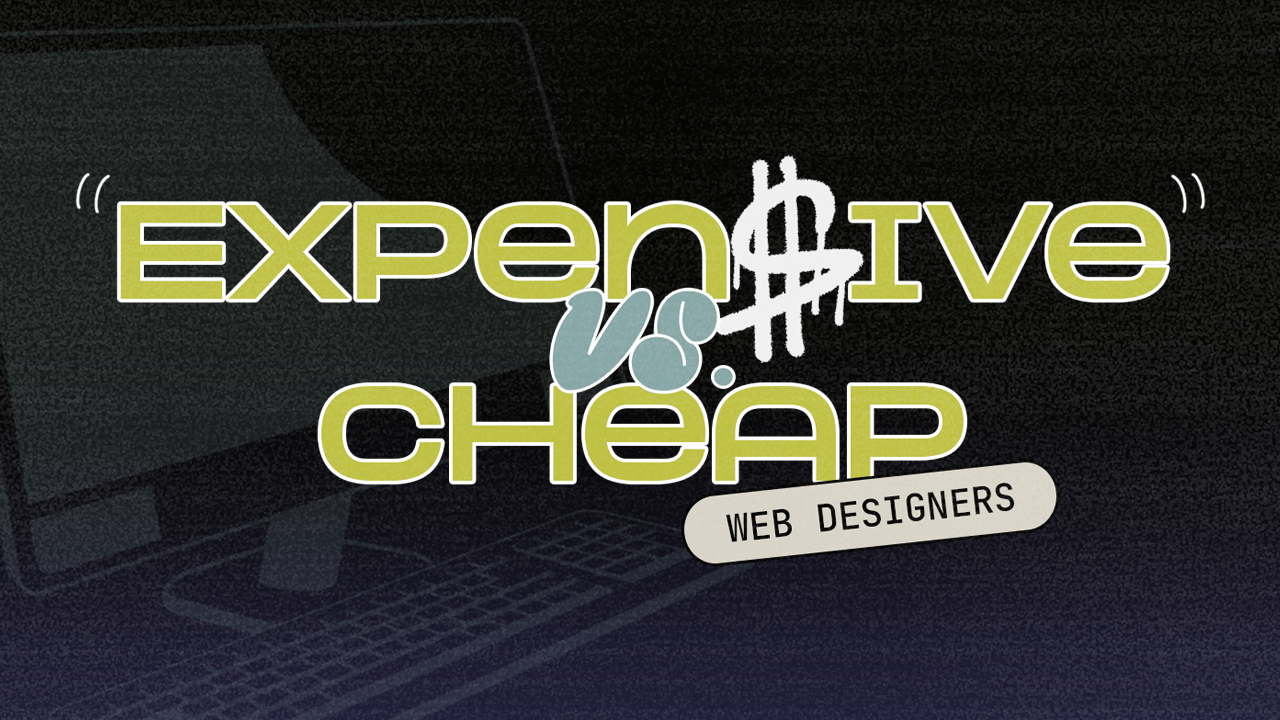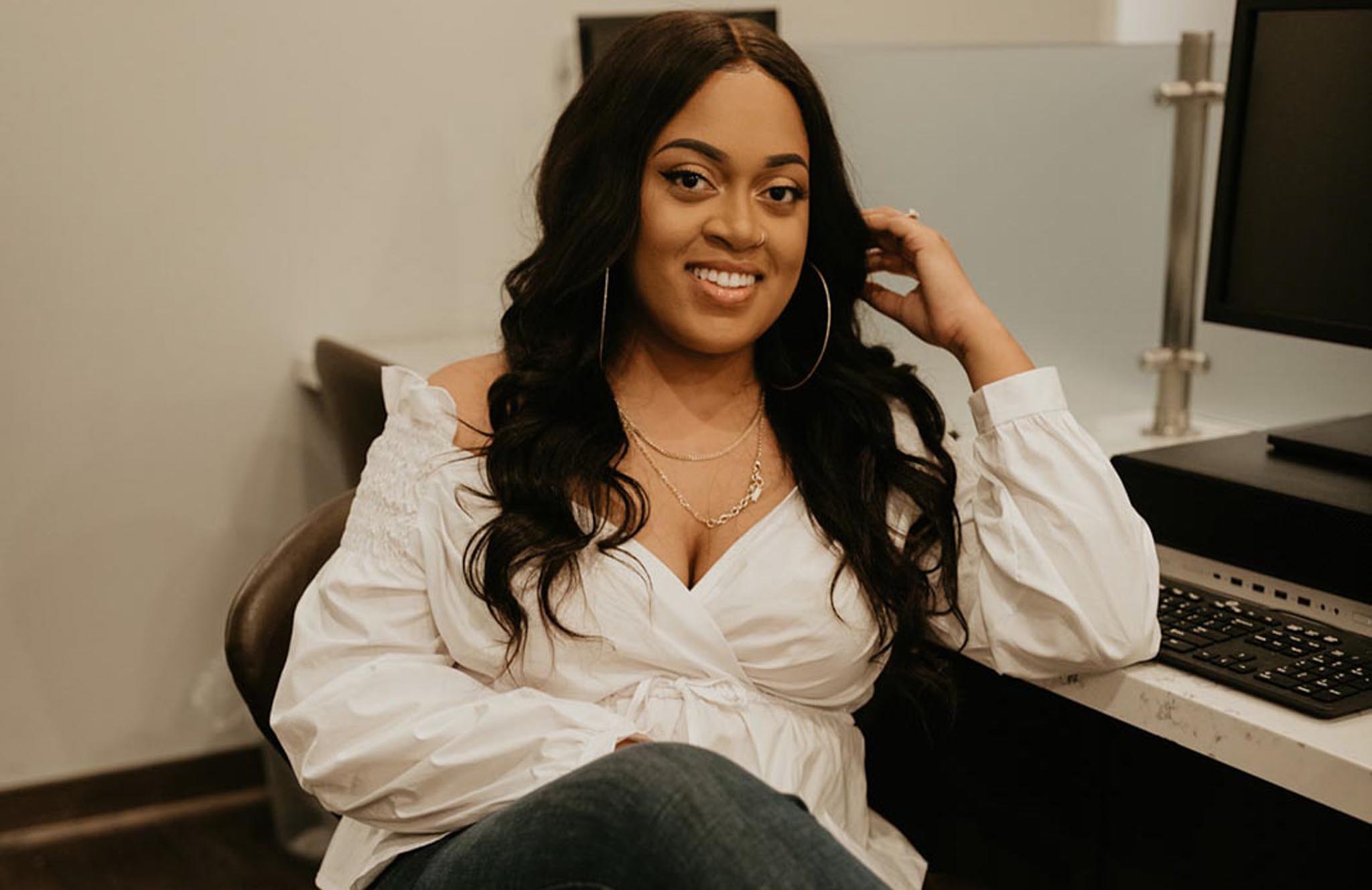The Real Difference Between Expensive and Cheap Website Designers

Rather not read? Watch the video instead!
I can't scroll far on my Threads feed without seeing someone looking for a website designer. And while most people are surprised by how many designers throw their hat in the ring, I’m always more surprised by the range of pricing (especially when it’s shared without even knowing the scope of the project). It’s a reminder that in the design world, price rarely tells the full story — it tells you what the designer values, and what kind of experience they’re offering.
Here’s the thing: what’s considered expensive is completely relative. When I first started designing, I charged $300 for a website, and some people thought that was expensive. Fast forward to today, and my projects can reach $10,000+, which others may still think is expensive. But the truth is, “expensive” really depends on the ROI you believe you’re getting.
To the average person, it can be hard to tell why one designer quotes $5,000+ for a custom website while another charges $500 for what seems like the same thing. But under the microscope, the gap between expensive and cheap website designers is wider than it looks, and the real difference isn’t just the price tag. It’s what’s behind it.
Education & Skill Investment
Why Experience Changes the Price
"Expensive" designers typically have years of experience and skin in the game. They've spent time refining their craft, often investing in education, advanced courses, mentorships, and coaching to sharpen their design, strategy, and marketing skills. This investment translates to smarter decisions, better client experience, and websites that actually convert.
Lower-cost designers are usually still be learning. Their too-good-to-be-true price tag might reflect a DIY education from YouTube University (hey, we all have to start somewhere) or a few template-based projects under their belt. That doesn’t make them bad designers, just earlier in their career. But it does mean you may be paying for trial-and-error, so keep that in mind before falling in love with the shiny $500 price tag.
Speed & Efficiency
The Value of a Proven Web Design Process
When you've designed dozens (or hundreds) of websites in the same niche, it eventually becomes like second nature. Seasoned designers move faster, know what to look for, where common problems occur, and how to create high-converting website pages without wasting time, and they charge accordingly.
Lower-cost designers usually need more time to figure things out. This can stretch out project timelines and eat up their availability, especially if they're also figuring out how to juggle marketing their business, building a client base, and project management on their own.
Project Management & Client Experience
More Than Just Building Pages
Speaking of project management, a seasoned designer doesn't just build your website, they run your project. From onboarding and strategy to timelines and revisions, the experience should be smooth, clear, and communicative. You're not left wondering "what's next?" or chasing them down for updates. Many have project management systems or virtual assistants supporting the project behind the scenes.
On the other hand, lower-cost designers often don’t have a streamlined process yet, which can leave you chasing down project updates and constantly wondering what happens next.
Niched Experience
Why Industry Knowledge Matters
Many seasoned designers choose to niche down, whether that’s by industry (like beauty, wellness, or events) or platform (like Webflow or Showit). This means they understand what works for your audience, your market, and your type of services. They’re not just designing something pretty, they’re designing something profitable.
Lower-cost designers, on the other hand, are usually open to any and all projects while they build their portfolio. This “jack-of-all-trades” phase is part of growth (all designers have been here before!), but it often leads to generic, one-size-fits-all websites that don’t truly resonate with your audience.
Capacity & Client Load
A Boutique Service vs. Production Line Experience
Lower-cost designers have to take on more clients to make a livable income (or balance design with another job). That means less time and attention for each project.
Seasoned designers price strategically so they can take on fewer clients and deliver a high-touch, boutique experience. It’s the difference between a personalized service and a production line.
Reputation, Demand, & Results
What You’re Really Investing In
Seasoned designers with strong reputations and consistent demand usually have the testimonials, case studies, and word-of-mouth referrals to back them up. They can charge more because their work delivers results. They’re not just selling websites, they’re selling peace of mind, expertise, and a measurable ROI.
Lower-cost designers may still be building up that reputation, so their prices reflect their experience level and the trust they still need to earn.
The Bottom Line: How to Choose the Right Website Designer
When you invest in an experienced website designer, you’re not just buying pages on the internet, you’re buying strategy. You’re paying for someone who understands how to turn clicks into clients and create a website that does the heavy lifting for your business. That kind of investment shows up everywhere: in your brand perception, your client experience, and your bottom line.
And truthfully? Choosing the “cheap” option can end up costing more long-term. I’ve rebuilt plenty of websites after not-so-great experiences, and clients always say the same thing: “I wish I did this the right way the first time.”
So the next time you’re comparing designers, don’t stop at the price tag. Look at what’s behind it. Because when it comes to websites, you usually get what you pay for.
Need help figuring out if you’re ready for a high-end website experience?




.jpg)


